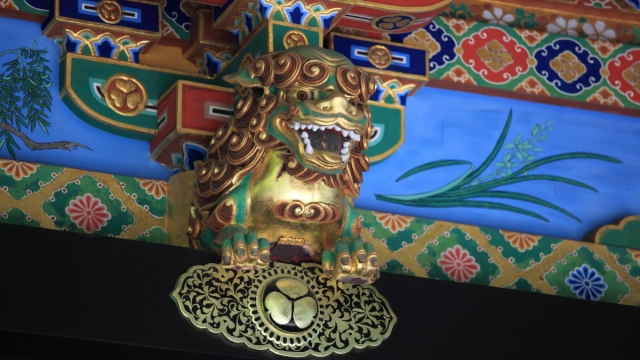
Japan is a country deeply rooted in tradition and spirituality, where sacred spaces pepper the landscape, each telling its own unique story. Among these, shrines stand out as significant cultural and religious symbols, representing a connection to the divine and a rich ancestral heritage. From the bustling streets of Tokyo to the serene mountains of Kyoto, these shrines attract millions of visitors each year, eager to experience their beauty and to pay homage to the divine.
In this article, we delve into the fascinating world of shrine rankings in Japan, exploring the most revered and architecturally stunning shrines across the nation. We will guide you through the history, significance, and allure of each location, whether you are a seasoned traveler or a curious newcomer eager to uncover the hidden gems of this ancient culture. Join us as we reveal the ultimate shrine rankings, highlighting what makes each site a must-visit for anyone seeking to understand the spiritual heart of Japan.
Top 10 Shrines to Visit
Japan is home to countless shrines that showcase the country’s rich spiritual heritage and stunning architecture. Each shrine tells its own unique story, often rooted in centuries of tradition. Among these, several stand out for their historical significance, natural beauty, and the experiences they offer to visitors. From bustling urban centers to serene rural landscapes, these top ten shrines promise a meaningful exploration of Japan’s sacred spaces.
First on the list is Fushimi Inari Taisha in Kyoto, famous for its thousands of vibrant red torii gates that wind through the mountain trails. Dedicated to Inari, the Shinto god of rice, this shrine attracts both pilgrims and tourists who seek to experience its ethereal atmosphere. The more you wander through the gates, the more magical the surroundings become as you encounter smaller shrines and offerings along the way.
Another must-visit is the Meiji Shrine in Tokyo, which lies within a lush forested area that provides a peaceful escape from the city’s hustle. This shrine honors Emperor Meiji and Empress Shoken and features traditional architecture that reflects the Shinto style. Visitors can participate in various rituals, such as writing wishes on wooden plaques or witnessing wedding ceremonies, making it a deeply immersive experience that connects you with Japan’s cultural heritage.
Cultural Significance of Shrines
Shrines in Japan are not merely places of worship; they are vital components of the cultural and social fabric of the nation. Rooted in Shinto beliefs, these sacred spaces serve as a bridge between the divine and the earthly, embodying the spirituality that permeates Japanese life. Each shrine is dedicated to specific kami, or spirits, which represent natural elements, ancestors, or mythical beings, highlighting the deep respect for nature and the ancestors in Japanese culture.
The rituals and festivals associated with shrines are crucial for community bonding and cultural preservation. Events such as Shinto weddings, seasonal festivals, and purification rites draw large crowds, reinforcing social ties and communal identity. These traditions are passed down through generations, making shrines a living repository of history and culture that fosters a sense of belonging among local residents and visitors alike.
Moreover, shrines often serve as places for contemplation and reflection, attracting not only those seeking spiritual solace but also individuals interested in Japanese aesthetics and philosophy. The serene environments, adorned with traditional architecture, gardens, and sacred trees, provide a space for meditation and connection with nature. This dual role of shrines as spiritual sanctuaries and cultural landmarks underscores their enduring importance in the landscape of Japan.
Visitor Experiences and Reviews
Visitors to Japan’s shrines often describe their experiences as transformative and deeply spiritual. Many travelers emphasize the serene atmosphere found within these sacred spaces, noting how the tranquility allows for personal reflection and connection with nature. The peaceful sounds of rustling leaves and flowing water set a backdrop for moments of contemplation, making each shrine a unique retreat from the hustle of modern life.
Reviews on popular travel platforms highlight the varied experiences each shrine offers. Some visitors are captivated by the stunning architecture and art, sharing how the intricate designs and historical significance evoke a sense of wonder. Others are drawn to the cultural practices, such as participating in purification rituals or making wishes at the votive areas. This interaction with local traditions enriches their journey, adding layers of meaning to their visit.
Best Shrines to Visit in Japan
Travelers also mention the welcoming spirit of the shrine staff and volunteers. Many have shared stories of engaging conversations about the history and significance of the shrines, enhancing their understanding and appreciation. The warmth of the local community often leaves a lasting impression, creating a personal bond that invites repeat visits and deepens the travelers’ respect for these sacred places.
Preservation of Sacred Spaces
The preservation of sacred spaces in Japan is crucial for maintaining the cultural and spiritual heritage associated with shrines. These sites are deeply intertwined with local communities, traditions, and practices that have developed over centuries. The act of preserving these spaces involves not just physical upkeep, but also the safeguarding of the rituals and festivals that take place within these sacred confines. Community involvement plays a significant role, as local individuals often take it upon themselves to uphold and pass down these traditions.
In recent years, modernization and urban development have posed significant challenges to the preservation of shrines. Many historical sites are at risk of being overshadowed by contemporary structures, leading to concerns about their visibility and accessibility. Various organizations and the Japanese government have initiated efforts to protect these sacred spaces, including restoration projects and educational programs aimed at raising awareness about their importance. Such initiatives are essential for fostering a sense of pride and responsibility within local communities regarding their cultural heritage.
Furthermore, sustainable tourism practices are increasingly being integrated into the preservation of shrines. By promoting responsible visitation, communities can balance the influx of tourists while ensuring that the sanctity and tranquility of these spaces are maintained. This approach not only helps protect the physical structures but also enhances visitors’ experiences by encouraging respectful engagement with Japan’s rich spiritual landscape. Thus, the ongoing efforts in preserving these sacred spaces reflect a commitment to honoring the past while accommodating the future.






